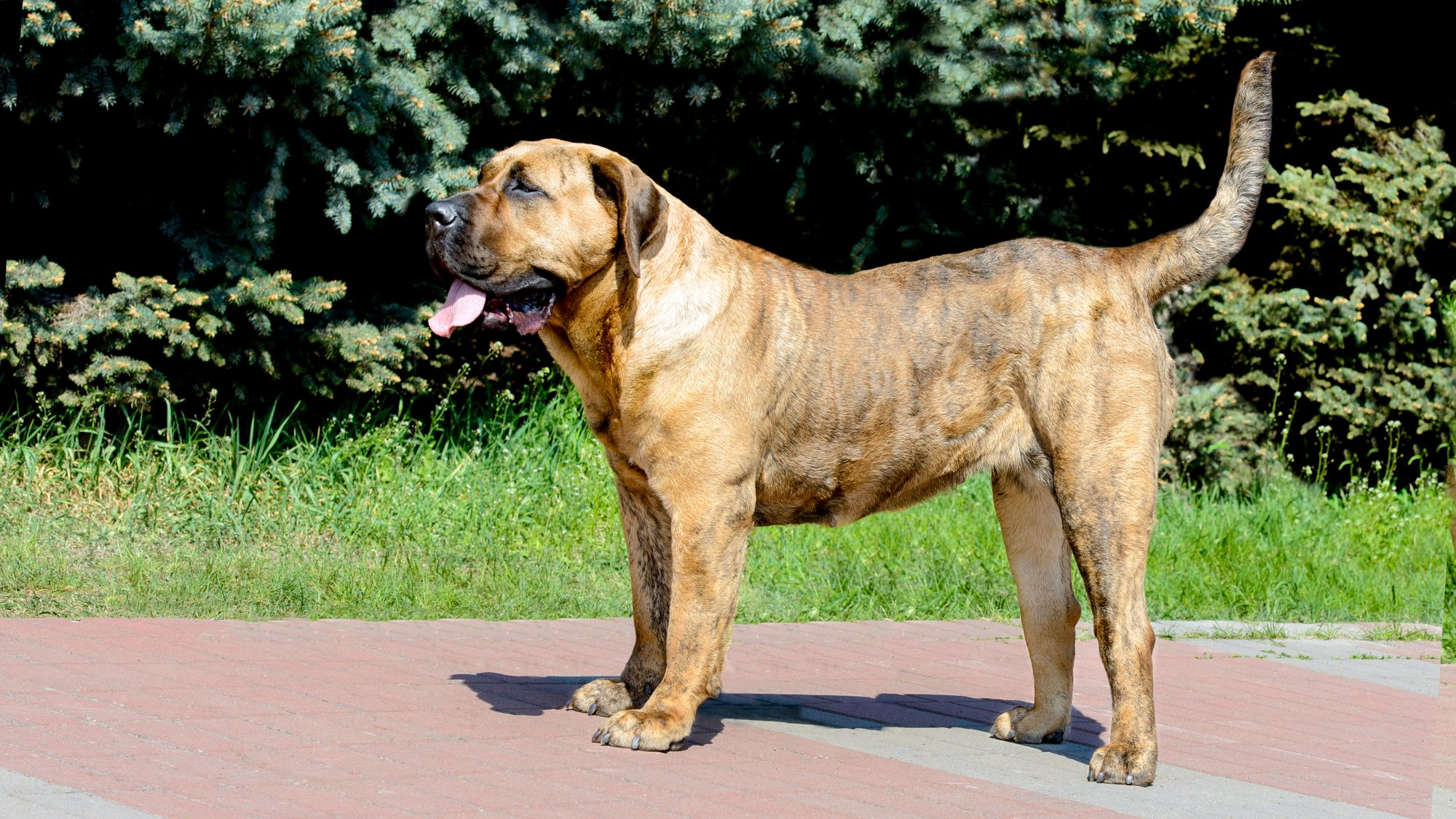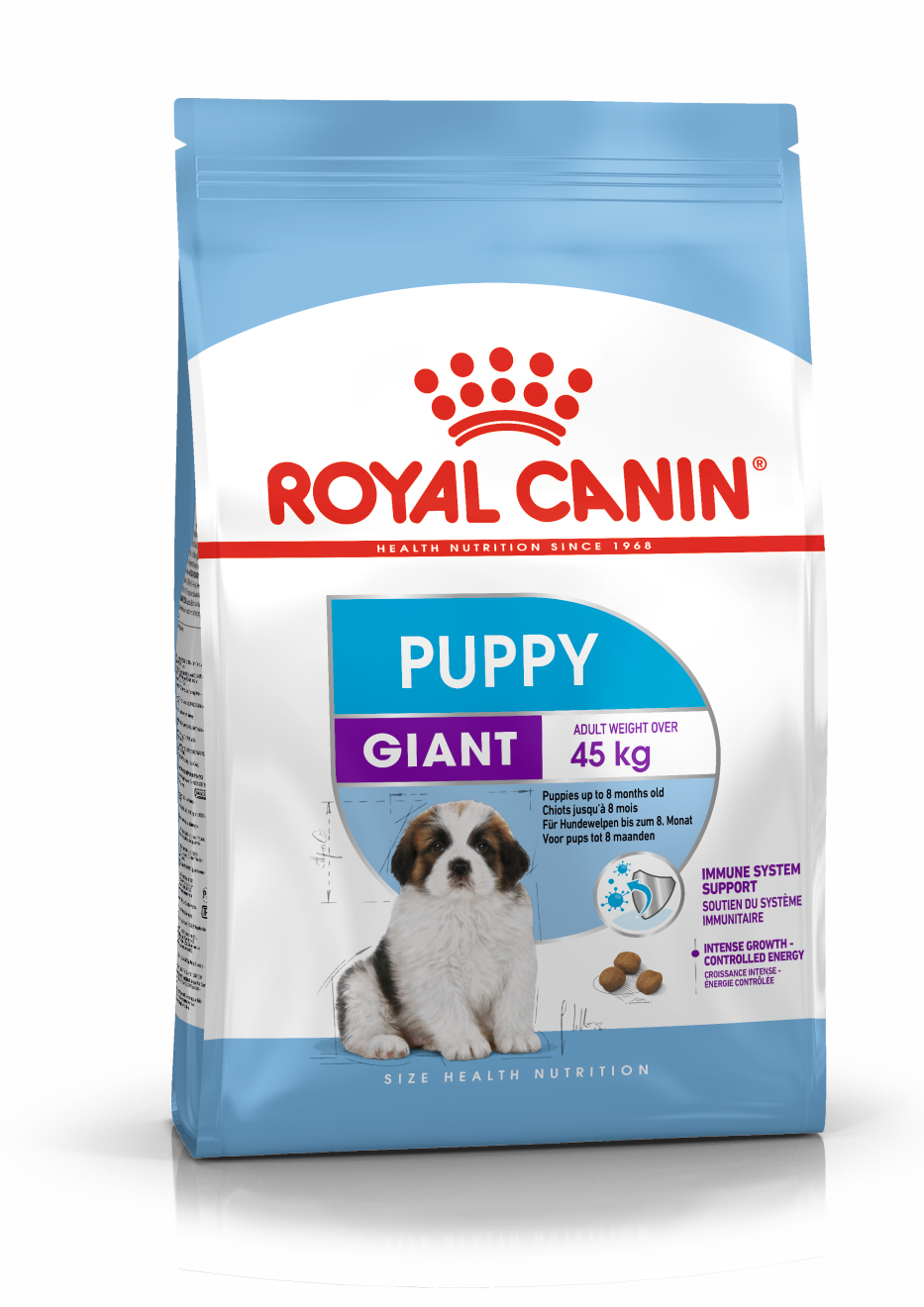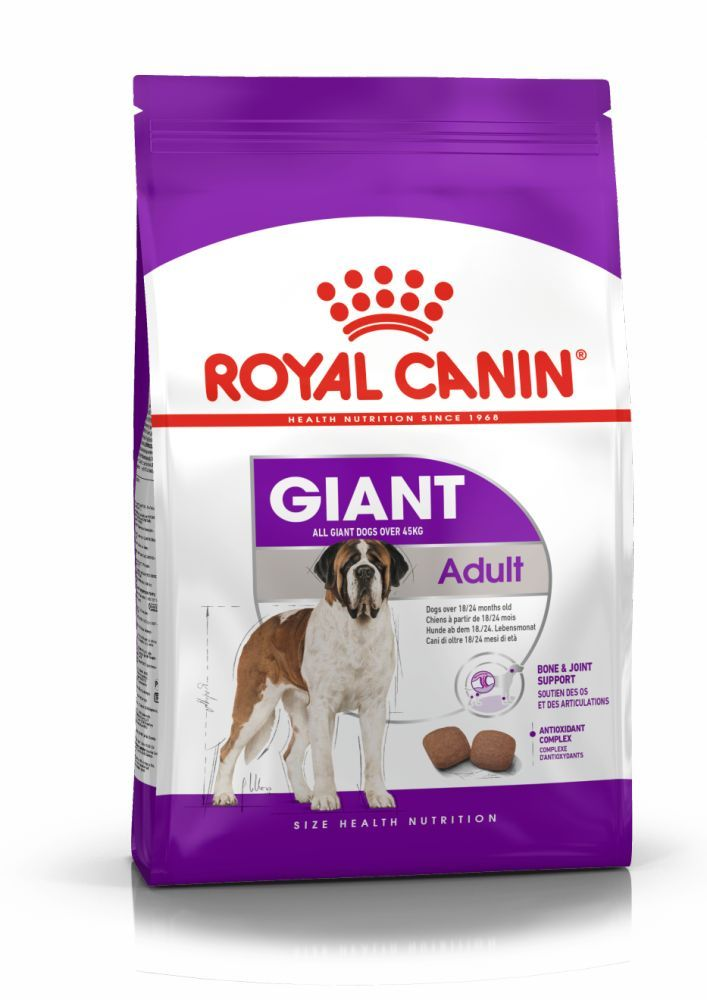Let's talk Presa Canarios
The Presa Canario’s extravagant size and muscular build are its defining features: This XXL breed hails from Spain’s Canary Islands where over the centuries they have earned a reputation as a reliable guard dog and cattle herder. Presa Canarios seem to positively exude physical strength and athleticism. And it’s more than just an impression: Even Presa Canario dogs that have left their cattle-herding days behind them to become affectionate family pets still need plenty of exercise.
Official name: Presa Canario
Other names: Dogo Canario, Perro de Presa Canario
Origins: Canary Islands, Spain
Tendencia a la salivación
3 out of 5Nivel de muda de pelo
3 out of 5Necesidad de actividad física (alta, baja, media):
5 out of 5Compatibilidad con otras mascotas
2 out of 5¿Clima cálido?
3 out of 5¿Adecuado para vivir en un departamento?
1 out of 5¿Apto para niños?*
2 out of 5¿Puede quedarse solo?*
2 out of 5
| Macho | Hembra |
|---|---|
| Altura | Altura |
| 56 - 62 cm | 50 - 66 cm |
| Peso | Peso |
| 50 - 65 kg | 40 - 55 kg |
| Edad de adulto | |
|---|---|
| 8 months to 2 years | |
| Edad madura | Edad sénior |
| 2 to 5 years | From 5 years |
| Edad de bebé | |
| Birth to 2 months | |
Tendencia a la salivación
3 out of 5Nivel de muda de pelo
3 out of 5Necesidad de actividad física (alta, baja, media):
5 out of 5Compatibilidad con otras mascotas
2 out of 5¿Clima cálido?
3 out of 5¿Adecuado para vivir en un departamento?
1 out of 5¿Apto para niños?*
2 out of 5¿Puede quedarse solo?*
2 out of 5
| Macho | Hembra |
|---|---|
| Altura | Altura |
| 56 - 62 cm | 50 - 66 cm |
| Peso | Peso |
| 50 - 65 kg | 40 - 55 kg |
| Edad de adulto | |
|---|---|
| 8 months to 2 years | |
| Edad madura | Edad sénior |
| 2 to 5 years | From 5 years |
| Edad de bebé | |
| Birth to 2 months | |

Get to know the Presa Canario
All you need to know about the breed
The Presa Canario, a molossoid-type breed from the Canary Islands, is a big imposing dog, combining strength and athleticism in one outsize package. It’s easy to see why these rustic dogs, developed from the crossing of local cattle dogs with mastiff-type breeds, made a name for themselves as guard dogs (they also helped farmers herd cattle). The Presa Canario’s huge, square-shaped head and solid, muscular body would make any intruder, human or animal, think twice before encroaching on their territory.
Nowadays though, while the breed is fairly rare, Presa Canario dogs also make affectionate family pets. They get on well with children once trained but because of their sheer size they should never be left alone with little ones. They are naturally wary of human strangers (those guard dog instincts) and while they have many good qualities, they are not known for their ability to get on with other dogs: Early socialisation is important to help them overcome this.
You’ll need plenty of space to accommodate your Presa Canario as well as the capacity to commit to training a breed that can sometimes be a little … how can we put this … strong-willed. With a dog of this size, thorough training is particularly important—for both your sakes. Just remember—you’re the leader of the pack!

2 facts about Presa Canarios
1. Cat foot
Feline is really not the word that springs to mind in connection with this hulking breed. So you may be surprised to learn that one of the notable physical characteristics of the Presa Canario is their “cat foot”—neat, round paws with high-arched toes, which make for greater endurance and stability on rough terrain. Luckily, that’s where the similarity ends: You won’t find all 50-odd kilograms of Presa Canario leaping delicately onto a high spot to groom their fur, for example.
2. Canary coat (of arms)
The Presa Canario may be relatively rare but there’s no doubt they are famous in the Canary Islands, where the breed originated. These huge, lovable dogs even feature on the islands’ coat of arms: Two Presa Canario dogs support a blue shield on which the archipelago’s seven islands are represented, all topped off with the Spanish crown. The islands themselves are even thought to derive their name from Insula Canaria, Latin for the island of the dogs.
History of the breed
Nowadays the Presa Canario can make an affectionate companion to humans, but their origins are less peaceful. The breed originated in the Canary Islands, the Spanish archipelago off the coast of North Africa, in the 19th century and was initially developed for dogfighting as well as guarding and herding on farms.
While the Presa Canario’s exact ancestors are not known for certain, the Bardino Majero, a now-extinct breed native to the islands, is thought to feature in their make-up, alongside English Mastiffs and the Perro de Ganado Majorero, another local breed of cattle dog.
Thankfully, by the mid 20th century, dogfighting had been banned, but the Presa Canario breed found itself facing an existential threat, as imported breeds such as German Shepherd Dogs, Great Danes and Doberman Pinscher began to gain in popularity on the islands. An American vet, Dr Carl Semenci, was instrumental in reviving the dwindling numbers of the Presa Canario breed, giving it a chance to thrive once more.
From head to tail
Physical characteristics of Presa Canarios
1.Face
2.Muzzle
3.Body
4.Tail
5.Coat
Things to look out for
From specific breed traits to a general health overview, here are some interesting facts about your Presa Canario
Bloat alert
Bloat, or gastric dilatation-volvulus (GDV) is an extremely dangerous and potentially fatal condition to which Presa Canario dogs and other large, deep-chested breeds are especially prone. Knowing the symptoms to look out for could save your dog’s life. Those symptoms include a bloated abdomen, restlessness, retching, salivation and whining or sudden stillness. If you spot these signs, you need to get your dog to the vet immediately. To minimise the risk of bloat, give your Presa Canario several small meals instead of one large one and avoid intense exercise around mealtimes.
Watch out for eye problems
The Presa Canario is a generally robust and healthy breed but they can be prone to eye problems such as canine multifocal retinopathy, a disorder that can cause retinal decay. The condition may negatively affect their vision but only very rarely results in complete blindness. To make sure this, and any other health condition, is spotted early and treated or managed in the best possible way, regular check-ups with your vet are recommended.
Healthy diet, healthier dog

When choosing food for a Presa Canario, there are many factors to consider: Their age, lifestyle, activity level, physical condition, and health including potential sickness or sensitivities. Food provides energy to cover a dog’s vital functions, and a complete nutritional formula should contain an adjusted balance of nutrients to avoid any deficiency or excess in their diet, both of which could have adverse effects on the dog. As giant-sized breed dogs have a higher risk of a condition called gastric dilatation volvulus (GDV), where the stomach becomes overstretched and rotated because of excess gas (usually caused by overfeeding during a meal), it’s recommended to split the daily allowance into three meals for puppies and try to keep this routine into their adult years.
Clean and fresh water should be available at all times to support good urinary regularity. In hot weather and especially when out exercising, bring water along for your dog’s frequent water breaks. Energy intake may also have to be adapted to the climatic conditions. A dog that lives outdoors in winter will have increased energy requirements.
The following recommendations are for healthy animals. If your dog has health problems, please consult your veterinarian who will prescribe an exclusively veterinary diet.
A Presa Canario puppy’s requirements, in terms of energy, protein, minerals, and vitamins, are greater than those of an adult dog. They need energy and nutrients to maintain their body, but also to grow and build it. During their growth, a Presa Canario puppy’s immune system develops gradually. A complex of antioxidants – including vitamin E – can help support their natural defences during this time of big changes, discoveries, and new encounters. Their digestive functions are different from an adult Presa Canario’s, too: Their digestive system is not mature yet so it is important to provide highly-digestible proteins that will be effectively used for the building of bones, tissues, and organs. Prebiotics, such as fructo-oligosaccharides, can support digestive health by helping balance the intestinal flora, resulting in good stool.
Giant-sized puppies, whose growth period is long and intense, are especially susceptible to skeletal and joint problems, including limb defects, bone deformities, and joint lesions.
The first part of growth (up to 8 months) is mainly concerned with bone development, although the muscles also start to grow. This means that a puppy that eats too much (takes in too much energy) will put on too much weight and grow too quickly. A food with an adjusted calorie content to support a high growth rate while at the same time avoiding excess weight gain will help minimise these risks. A balance of energy and minerals (calcium and phosphorus) during this first phase of growth will contribute to bone mineralisation in order to support bone consolidation and the development of healthy joints. Although the calcium content in the food needs to be increased, giant-sized breed puppies are more sensitive to excessive calcium intake. It’s important to understand that adding any ingredients to a complete food formulated for the growth phase is at best unnecessary and at worst dangerous for the animal, unless prescribed by a veterinarian.

As with many giant-sized breed dogs, the Presa Canario is prone to digestive sensitivity, and their body weight can create stress on their joints throughout their lifetime. Presa Canario dogs’ nutritional needs then should include high-quality protein and a balanced supply of dietary fibre to help promote optimal digestibility, as well as glucosamine, chondroitin, and antioxidants to help support the health of their bones and joints. A formula enriched with omega-3 fatty acids, such as EPA and DHA, will help maintain healthy skin. An adapted taurine content is also important to support healthy heart function.
It is important to avoid feeding Presa Canario dogs human foods or fatty snacks. Instead, reward them with kibble taken from their daily meal allowance, and strictly follow the feeding guidelines written on the package.
Caring for your Presa Canario
Grooming, training and exercise tips
Grooming your Presa Canario’s fur is easy—a weekly brush should suffice and is a nice opportunity for a bonding cuddle.
The Presa Canario breed needs plenty of exercise—regular walks, chasing a ball, running around following their noses (in a safely fenced space, please, unless you want a huge canine fugitive on your hands) or even swimming are all good ways to keep these sturdy and muscular dogs in great condition.
They are intelligent, quick learners – good news for training – but they also have their stubborn side. You need to show you’re in charge, staying calm, patient and firm. Any food treats for training, need to come out of your Presa Canario’s daily allowance to avoid excessive weight gain. Presa Canario puppies also benefit from early socialisation to make sure they develop into content, well-adjusted dogs that can get along well with other dogs and people, even if their instinct is always to protect their pack.
7/7
All about Presa Canarios
After positive and thorough training, as well as plenty of socialisation when young, the answer is yes. Once trained, the Presa Canario is known to get on well with children, although such a large and powerful dog should not be left alone with small ones—the dog’s size and strength means they could easily be knocked over accidentally. They are affectionate and docile with their human families, albeit wary of strangers.
No. Their large size gives Presa Canario dogs an imposing appearance, and thanks to their history, they are often thought of more as guard dogs than family pets. But once they are trained and part of the family, although they are protective, with a big, impressive bark that may be put to good use if strangers approach their home, they are also loyal and affectionate.
Suggested Breeds
Read more on this topic
- Veterinary Centers of America https://vcahospitals.com/;
- Royal Canin Dog Encyclopaedia. Ed 2010 and 2020
- Banfield Pet Hospital https://www.banfield.com/
- Royal Canin BHN Product Book
- American Kennel Club https://www.akc.org/
Dale like y compartí esta página